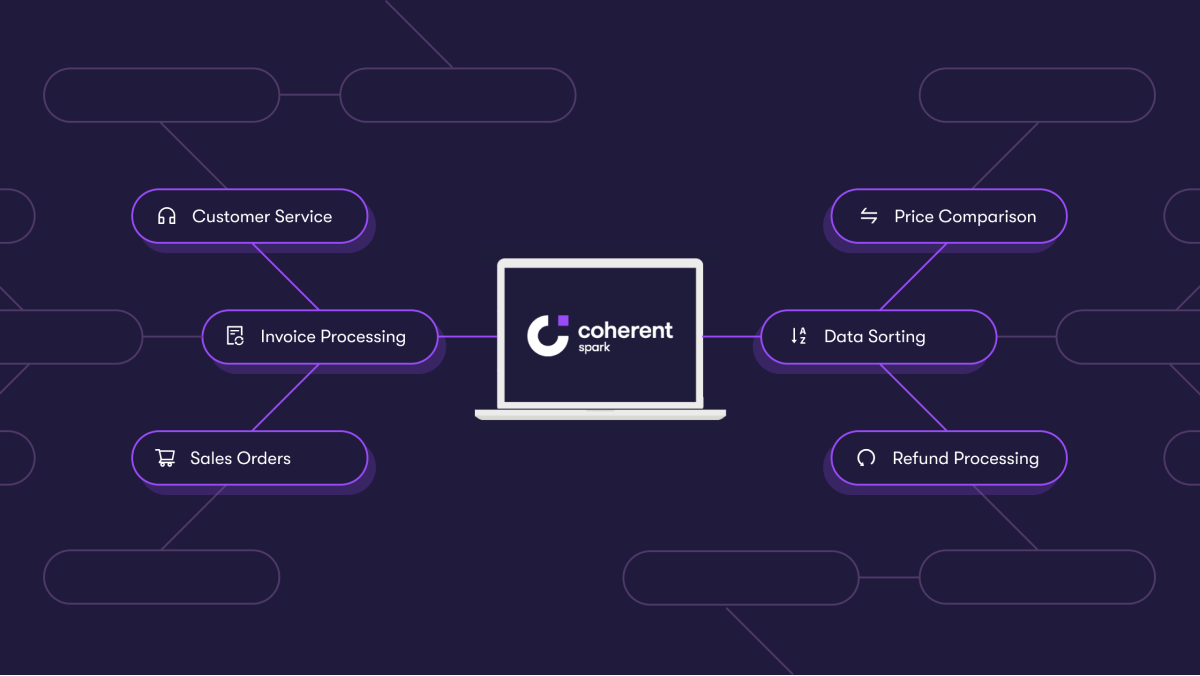In 2016, McKinsey interviewed Professor Leslie Wilcocks from the London School of Economics about the burgeoning world of Robotic Process Automation (RPA) and the promise of 30-200% ROI in the first year of implementing robotics1
The interview outlined that “RPA deals with simpler types of tasks. It takes away mainly physical tasks that don’t need knowledge, understanding, or insight”. This statement was not only a reflection of the tools available at the time, but also of the general mentality that RPA could not close the gap to intelligent, human processing.
In more recent years, consultancies such as EY, IBM, and Accenture have been touting the benefits case for Intelligent Automation (IA), which couples the RPA tools with advanced analytics and artificial intelligence methods (such as computer vision, natural language processing, and machine learning) to improve the cognitive processing of the robotics platforms and drive increased ROI for businesses.
However, these processes typically remained discrete, with an RPA engineer developing a flow to solve a single business process. Businesses that rushed to implement RPA and IA found that without well-defined business processes, the robots would only intensify the problems. Instead of a human being able to reject cases that did not meet an unwritten rule, the robots simply processed and raised exceptions, sometimes by the thousands.
The key to resolving a number of these process issues was to simply add more robots to handle rule variations. When you have a hammer, everything starts to look like a nail. But complex logic trees and handling of nuanced business rules still did not allow businesses to truly unlock the ROI which was heralded back in 2016.
A lack of a centralized rule repository and management platform has become a sticking point for many RPA and IA solutions. It has become harder for business teams to manage the robots and the level of complexity involved now require dedicated, technical teams to manage the bots and update them. Many organizations have set up dedicated teams within IT to handle this. A simple rule change across many bots has now become a lengthy process akin to the very IT development cycle that RPA implementation teams set out to avoid.
In these situations, a centralized logic platform can alleviate issues by plugging in business rules developed by business SMEs and allowing them to have the freedom to update and change the rules as needed. With this alternative, the business can make limitless changes and tweaks to robots to make them all work in unison. A logic platform that serves as a SaaS-based “hive mind” for the robots brings to light many sci-fi analogies. However, it’s where businesses can truly manage business rules and calculations without the need to integrate deeply into back-end, legacy platforms or introduce yet more robots to solve these problems.
Coherent Spark is a platform that can provide the centralized logic for business RPA engines to call upon specific rules, which can be set up agnostic of business process (say, for example, a risk and compliance rule set e used for applications and robots alike). Spark allows compliance team members to simply update rules based on adjusted risk tolerances and update the model without need for development effort or robotics training.
With Spark, not only are maintenance efforts reduced, but the platform can also supercharge RPA and IA development by providing a centralized rules library. Automated processes can now leverage a central hub for processing without needing to be integrated deeply into the robotic workflow. This means RPA development efforts can be reduced and even ad-hoc models can be governed in a centralized, auditable way.
In a separate McKinsey report2 in 2021, it was noted that “Every AI system or automation tool needs to undergo a rigorous and comprehensive test regime to identify any risk of inaccuracy or bias in the input, processing components, and output.” This is another key area where Spark can drive significant value in the automation of testing of business rules. By leveraging Spark for these complex rules and validations, business users avoid the need to convert them into custom expressions and achieve the ability to run tens of thousands of test cases on these rules.
This allows businesses to gain comfort over the accuracy of their rules and provides them the ability to review the correctness of their implementation in a high-performance way. If a business rule were to change, Spark would allow users to run the existing testbed against existing transactions or generate a new testbed to understand the impact using either synthetic test cases or on data previously logged by the platform.
For businesses that were promised the advent of robots would significantly increase ROI, leveraging Coherent Spark is the next step in truly unlocking your business rules and being able to update and maintain them easily, without the need for reliance on specialized support.
Source:
Daniel Morgan
Head of Solutions
Daniel is our Head of Solutions at Coherent. He oversees the development of Coherent’s innovative product suite. Over the past 10 years working across more than 25 countries, Daniel has recognised the systemic challenges facing insurers. Building on this knowledge, he has been able to identify and implement technology solutions that change preconceptions and drive positive change. Throughout his career, Daniel has heard people say “but we’ve always done it that way”. His mantra is to refuse to accept that things should stay the way they are!
-
This author does not have any more posts.





